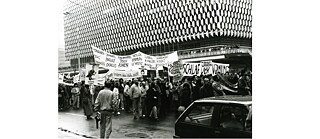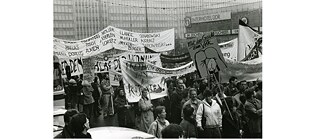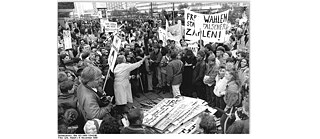Chapter 2
Berlin-Alexanderplatz - Live on GDR-TV

"It's as if someone had thrown open the windows," says author Stefan Heym, thus capturing the mood of the 500,000 who, on November 4 at Berlin's Alexanderplatz, are calling on the GDR leadership to reorient itself politically.
By Regine Hader and Dr. Andreas Ludwig
The artists of various East Berlin theatres are calling for this demonstration, waiting for the demonstrators. Meanwhile, people stand close together in the underground corridors - sandwiched between their knees: their banners still rolled up and their posters held downwards. As in the weeks before in Leipzig and elsewhere, they are imaginative, ironic and express the widest variety of political demands for a reform of socialism in the GDR. With slogans like "Mit dem Gesicht zum Volk" ("With your face to the people") and "130000 Stasiknechte haben keine Sonderrechte" ("130000 Stasi yes-mens have no special rights"), the demonstrators address the GDR leadership directly. During the first approved demonstration critical of the regime, the citizens recapture the street - and the state permits this action. Freedom and change cast a spell over the people. More than 20 speakers, including official representatives of GDR policies, analyse the situation of their country and make their demands. It's quiet: Probably demonstrators in the GDR have never listened so attentively to a rally.


Read on in chapter 4